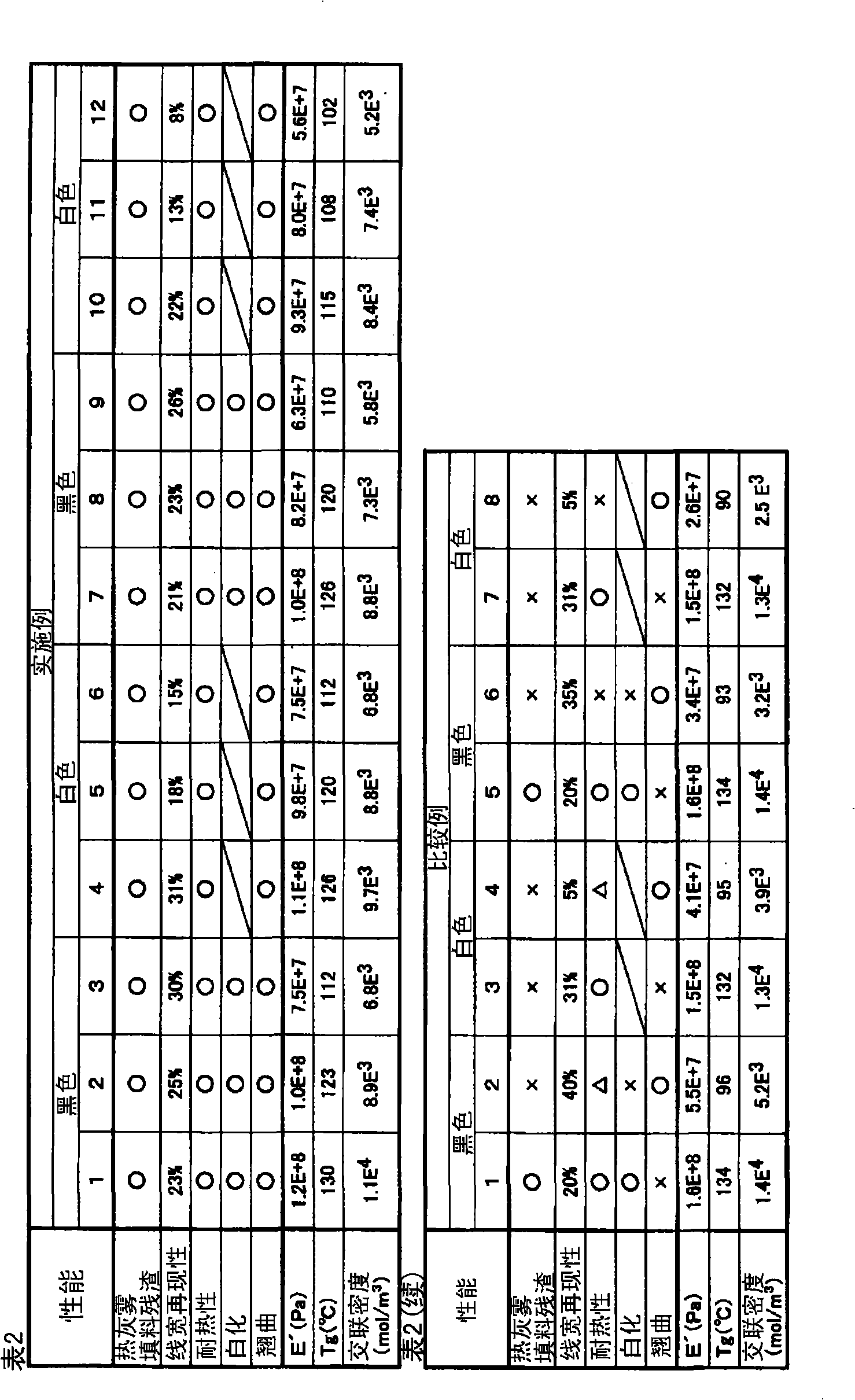Solder resist compound and cured product thereof
A composition and solder resist technology, applied in the manufacturing of instruments, electrical components, printed circuits, etc., can solve the problems of difficulty in suppressing warpage, poor light transmission, insufficient heat resistance of solder resist, etc., and achieve excellent plating resistance, The effect of less curing shrinkage
- Summary
- Abstract
- Description
- Claims
- Application Information
AI Technical Summary
Problems solved by technology
Method used
Image
Examples
Embodiment
[0076] Hereinafter, although an Example and a comparative example are shown and this invention is demonstrated concretely, of course, this invention is not limited to a following example. In addition, the following "parts" mean "parts by mass" unless otherwise specified.
[0077]
[0078] The carboxyl group-containing photosensitive resin (A-1) of the present invention was produced according to the following synthesis examples 1 and 2, and the photosensitive resin (A-2) was produced according to the following synthesis example 3.
Synthetic example 1
[0080] Add 220 parts of cresol novolak type epoxy resin (manufactured by Nippon Kayaku Co., Ltd., EOCN-104S, softening point 92°C, epoxy equivalent 220), 13.4 parts of dimethylolpropionic acid, 65 parts of acrylic acid, 0.46 parts Methyl hydroquinone, 113 parts of carbitol acetate and 48.5 parts of solvent naphtha were heated to 90°C and stirred to dissolve the reaction mixture. Next, the reaction solution was cooled to 60°C, 1.4 parts of triphenylphosphine was added, heated to 100°C, and reacted for about 32 hours to obtain a reactant with an acid value of 0.5 mgKOH / g. Next, 36.5 parts of tetrahydrophthalic anhydride, 13.8 parts of carbitol acetate, and 6.0 parts of solvent naphtha were added thereto, heated to 95°C, reacted for about 6 hours, and cooled to obtain a solid with an acid value of 40 mgKOH / g, a carboxyl group-containing photosensitive resin with a non-volatile content of 65%. Hereinafter, this reaction solution is called varnish (A-1a).
Synthetic example 2
[0082] Add 220 parts (1 equivalent) of cresol novolak type epoxy resin (manufactured by Nippon Kayaku Co., Ltd., EOCN-104S, softening point 92°C, epoxy equivalent 220 ), add 218 parts of carbitol acetate, and heat to dissolve. Next, 0.46 parts of methylhydroquinone as a polymerization inhibitor, and 1.38 parts of triphenylphosphine as a reaction catalyst were added. The mixture was heated to 95-105° C., and 50.4 parts (0.7 equivalent) of acrylic acid and 41.5 parts (0.3 equivalent) of p-hydroxyphenethyl alcohol were slowly added dropwise to react for 16 hours. Cool the reaction product (hydroxyl: 1.3 equivalents) to 80-90°C, add 91.2 parts (0.6 equivalents) of tetrahydrophthalic anhydride, react for 8 hours, and after cooling, take out the reaction solution (called varnish (A-1b )).
[0083] The carboxyl group-containing photosensitive resin thus obtained had an acid value of 83 mgKOH / g of solid matter and a nonvolatile content of 65%.
PUM
| Property | Measurement | Unit |
|---|---|---|
| Crosslink density | aaaaa | aaaaa |
| Glass transition temperature | aaaaa | aaaaa |
| Crosslink density | aaaaa | aaaaa |
Abstract
Description
Claims
Application Information
 Login to View More
Login to View More - R&D
- Intellectual Property
- Life Sciences
- Materials
- Tech Scout
- Unparalleled Data Quality
- Higher Quality Content
- 60% Fewer Hallucinations
Browse by: Latest US Patents, China's latest patents, Technical Efficacy Thesaurus, Application Domain, Technology Topic, Popular Technical Reports.
© 2025 PatSnap. All rights reserved.Legal|Privacy policy|Modern Slavery Act Transparency Statement|Sitemap|About US| Contact US: help@patsnap.com


